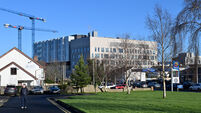Scientists begin anxious wait for Beagle to phone home from Mars
Professor Colin Pillinger said scientists were just beginning their search for the craft, which should have landed on the Red Planet early on Christmas Day.
Last night they failed to pick up a faint signal from Beagle 2 using the powerful radio telescope at Jodrell Bank in Cheshire.














